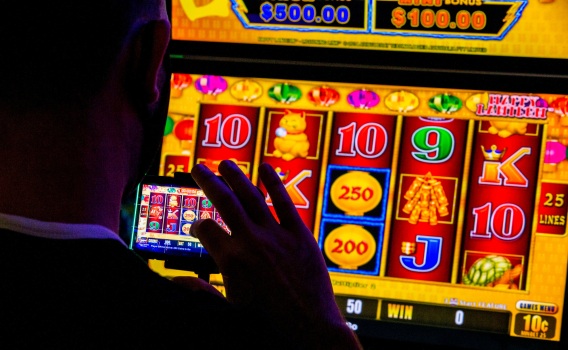
A slot machine is a casino game that allows the player to spin a set of reels, and win money by spinning the right combination of symbols. In most cases, the winning combinations are listed in a pay table. This list is often displayed in the help menu. Some slot machines feature interactive elements, such as spin the wheel or click a button, to increase the excitement.
The first mechanical slot machines were introduced in the early 1900s. These machines were made by Charles Fey in his San Francisco workshop. They were based on the same design as the Liberty Bell, a mechanical device he built in 1899. After the introduction of electrical devices, the designs of these machines evolved. Symbols were added to the machines, and the number of possible combinations increased from 10,648 to 22.
Electronic slot machines were later developed, and the manufacturers programmed the machines to weight the symbols. This allowed for more combinations, and improved payouts with more wagers. However, this technology also resulted in some malfunctions. Although most electronic malfunctions are not detected, they can cause disputes between players and casinos.
Before 1992, slot clubs were only available in small gambling establishments. Their popularity spread, and they were banned in some countries. In Russia, slot clubs appeared in 1992. Later, they became popular in places like India and the United States. Eventually, they were banned in certain gambling regions, such as California.
Today, there are many different types of slot games. Some have unique themes, and others have advanced bonus features. Depending on the theme, symbols may represent a wide variety of other symbols. For example, a traditional slot may have symbols such as fruits, bells, lucky sevens, or even a candle. Others may have wild symbols that substitute for all but the jackpot symbol. Wild symbols may only appear on certain reels, and will offer a lower prize for non-natural combinations.
In the United Kingdom, slot machines are classified according to the Gambling Act 2005. These machines usually have a credit meter, which displays the number of credits left on the machine. Most machines have a lever or a button to start the game. Typically, the pay table is located above or below the wheels.
Many slots come with a hold&spin feature, which lets the player continue to spin the reels until a winning combination is achieved. This feature allows for bigger payouts, since the player can create more winning combinations in the same time. Another bonus feature, if available, is a free spin, which may award the player a larger prize.
Video slots have the same basic premise as other types of machines, but offer a more varied video graphics and interactive elements. Since the 1980s, slot machine manufacturers have incorporated electronics into their machines. Using a microprocessor, they have the ability to multiply fixed payout values by the number of coins per line. Compared to classic, mechanical slots, video slots provide three times greater chances of debilitating gambling.